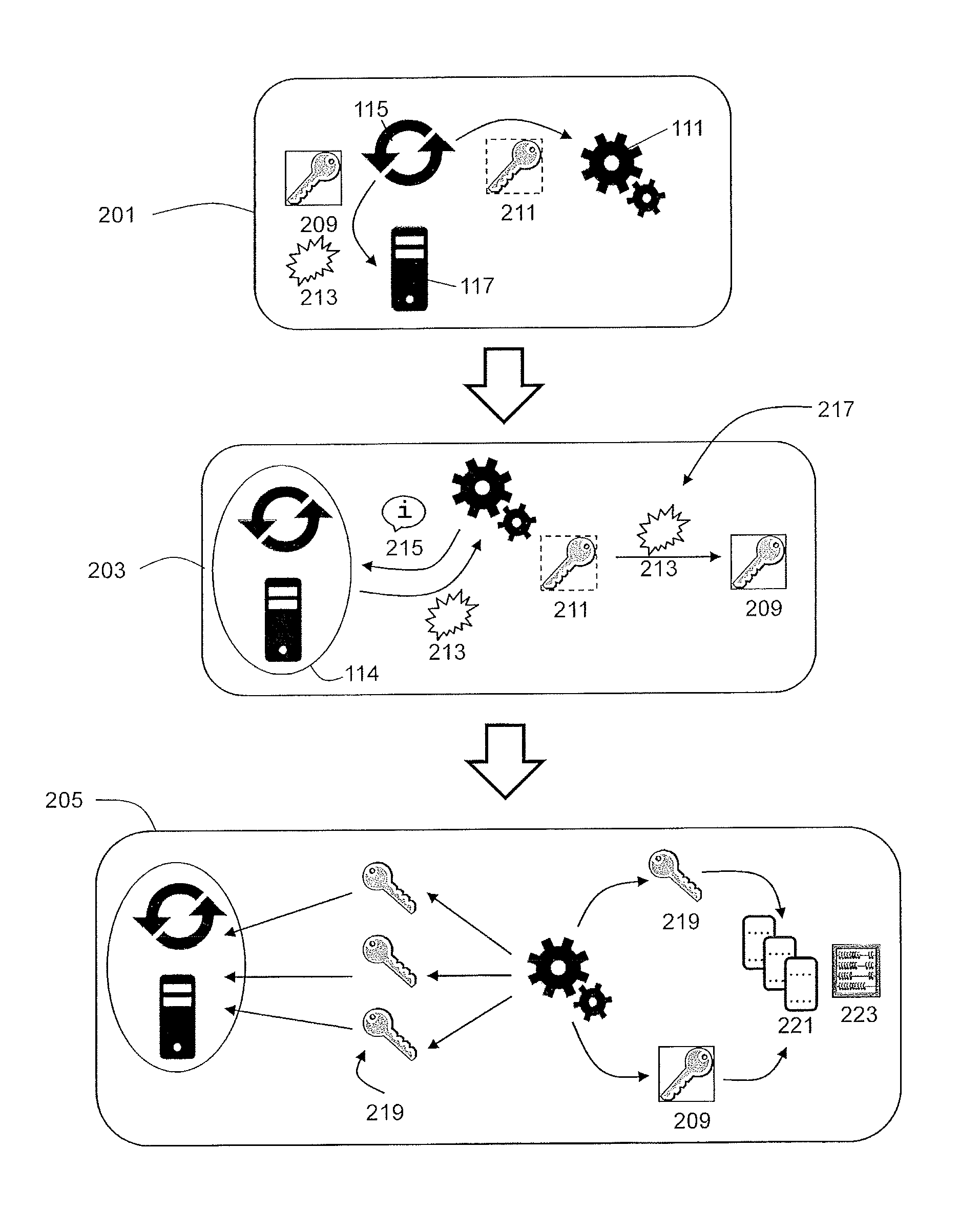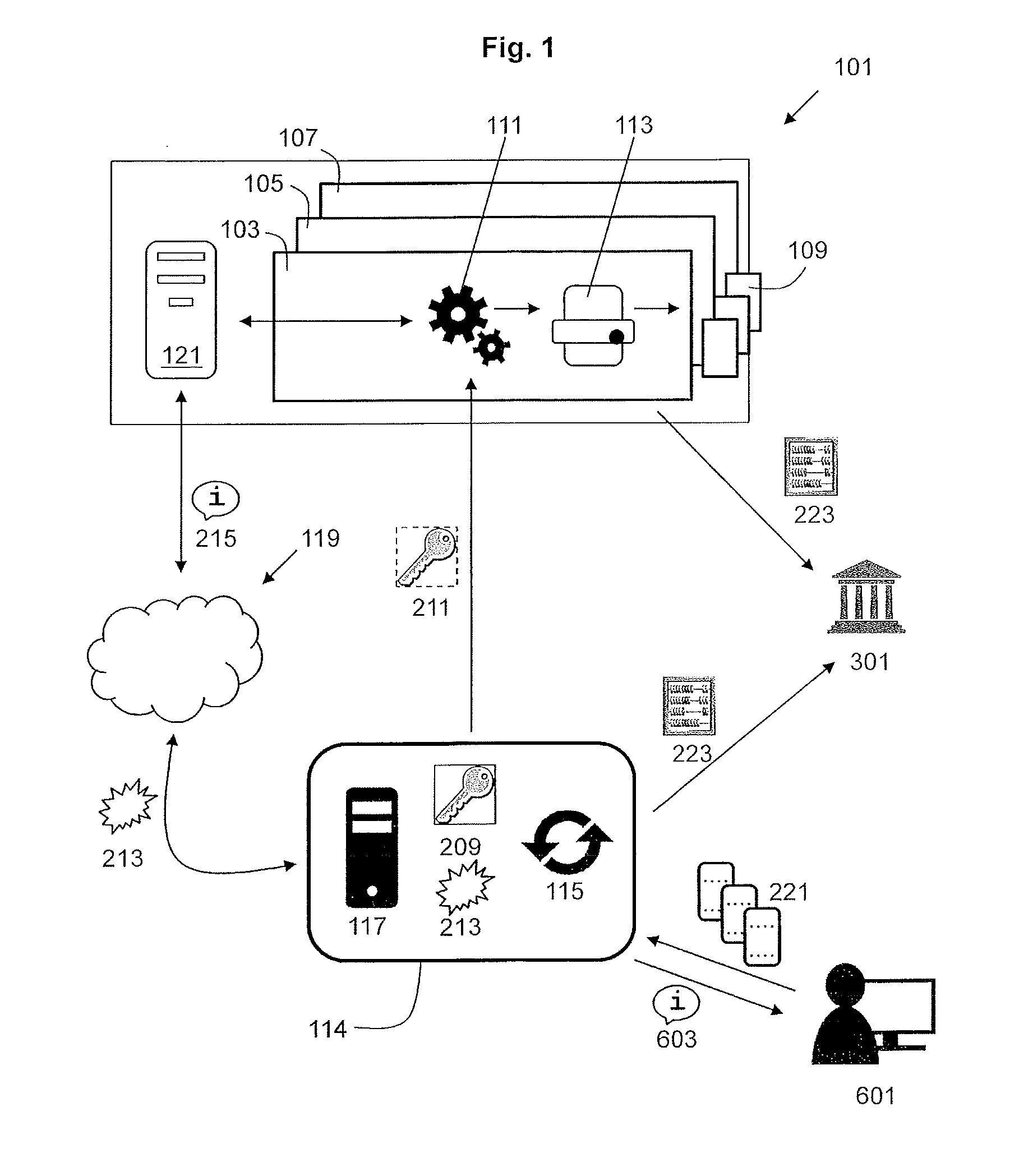Method and apparatus for marking manufactured items
a technology for manufactured items and markings, applied in the field of methods and equipment for marking manufactured items, can solve the problems of affecting customers, affecting customers, and affecting the revenue of producers and government authorities, and achieving the effects of reducing environmental impact, reducing costs, and reducing costs
- Summary
- Abstract
- Description
- Claims
- Application Information
AI Technical Summary
Benefits of technology
Problems solved by technology
Method used
Image
Examples
first embodiment
[0085]FIG. 3 shows a further step 207 of the method of FIG. 2 when the system of FIG. 1 is used for tax verification. In this case, the steps of the method are carried out in the order 201, 203, 205, 207. Production volumes, for example the number of items produced in each production batch by each production centre, as well as statistical production data per brand or per intended market, may be gathered and stored. Such production volume information may be used to verify tax collection. The system may be used instead of, or in addition to, a conventional system of tax stamps or fiscal stickers to enable verification of tax-paid status, to protect excise revenues and to prevent counterfeiting of tax stamps or fiscal stickers.
[0086]At the third step 205 of the method of FIG. 2, the code generator 111 or production centre 103, 105, 107 keeps a count 223 of the codes which are marked onto the manufactured items during the production process. The counting may be done by the code generato...
second embodiment
[0091]FIG. 4 shows a further step 204 of the method of FIG. 2 when the system of FIG. 1 is used for tax verification. In this case, the step 204 shown in FIG. 4 is carried out before step 205, either after or in parallel with steps 201 and 203. The system may be used instead of, or in addition to, a conventional system of tax stamps or fiscal stickers to enable verification of tax-paid status, to protect excise revenues and to prevent counterfeiting of tax stamps or fiscal stickers.
[0092]At step 204, the code generator 111 and marker 113 at each production centre request authorization from a government authority 301 to generate a defined number of ID codes. This is shown schematically at 403. Alternatively, the request may be sent from a manufacturing portal dedicated to one or more production centres. In response, the government authority 301 authorizes the production centre to generate a defined number of ID codes. This is shown schematically at 405.
[0093]Preferably, the request 4...
PUM
 Login to View More
Login to View More Abstract
Description
Claims
Application Information
 Login to View More
Login to View More - R&D
- Intellectual Property
- Life Sciences
- Materials
- Tech Scout
- Unparalleled Data Quality
- Higher Quality Content
- 60% Fewer Hallucinations
Browse by: Latest US Patents, China's latest patents, Technical Efficacy Thesaurus, Application Domain, Technology Topic, Popular Technical Reports.
© 2025 PatSnap. All rights reserved.Legal|Privacy policy|Modern Slavery Act Transparency Statement|Sitemap|About US| Contact US: help@patsnap.com



